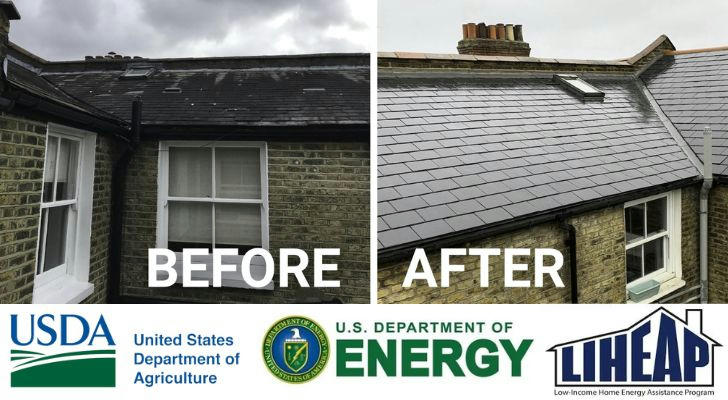Low-income Families: How to Get Government Subsidies for Roof Replacement
Many homeowners struggle with leaky or aging roofs but delay repairs due to high costs. For low-income families, these problems can impact not only comfort but health and safety. Fortunately, several government programs exist to help eligible residents replace their roofs with the support of federal or state-backed initiatives. Read below to get the roof replacement information you want.

Why Consider Replacing Your Roof Through Government Programs?
1️⃣ Lower Energy Bills: An energy-efficient roof helps regulate home temperature, reducing heating and cooling costs. According to the U.S. Department of Energy, proper insulation and materials can cut energy bills by up to 30%.
2️⃣ Improved Living Comfort: New roofing enhances insulation and reduces drafts, making homes quieter and more comfortable year-round.
3️⃣ Increased Property Value: A newly installed roof can significantly boost your home's resale value and curb appeal.
4️⃣ Government Incentives: Programs backed by the USDA, DOE, and local governments offer financial support to qualifying homeowners, including potential tax credits and direct subsidies.
What Programs Are Available?
1. Single Family Housing Repair Loans & Grants - USDA Rural Development
🔹 What It Offers: Provides up to $10,000 in non-repayable grants to help homeowners repair or replace roofs, install insulation, or improve structural safety.
🔹 Who Can Apply: Homeowners aged 62+ with low income living in designated rural areas.
🔹 How to Apply: Visit the USDA Rural Development site or contact your local office.
2. Weatherization Assistance Program (WAP) – U.S. Department of Energy
🔹 Program Description: WAP helps improve energy efficiency through roof repairs, insulation, and ventilation upgrades.
🔹 Eligibility Requirements: Must meet low-income guidelines, own your home, and live in a participating state.
🔹 Application Method: Apply through your local WAP agency; prepare tax returns, proof of homeownership, and utility bills. More info at energy.gov.
3. State and Local Energy & Housing Programs
🔹 Program Types: Vary by state—may include rebates, low-interest loans, or matching grants.
🔹 Support Access: Contact your city’s housing authority, community development office, or public utility for details.
🔹 Documentation: Income verification, property details, and repair needs are often required.
How to Apply for Roof Replacement Support
Eligibility Criteria
- U.S. citizen or legal resident
- Meet federal or state income limits
- Proof of homeownership and primary residence
- Veterans, seniors, and individuals with disabilities may receive priority consideration
Application Process
Eligibility Check: Gather income and property documentation Match Program: Identify which programs fit your profile Document Submission: Upload materials to the appropriate portal Service Scheduling: Once approved, work will be performed by certified contractors
Real-Life Success Story: A Roof Replacement That Changed a Life
After years of dealing with leaks and rising utility bills, 63-year-old Martha Johnson of rural Kentucky applied for the USDA’s Housing Repair Grant. Within months, her old roof was replaced with energy-efficient materials by a certified local contractor. Martha now saves over $400 per year on her electricity bills and enjoys a quieter, warmer home.
Just outside Albuquerque, New Mexico, the Rivera family—owners of a 1970s-era home—struggled with severe summer heat and winter drafts due to poor roof insulation. After learning about the Weatherization Assistance Program (WAP), they applied through their local community action agency. Within six weeks, their roof was upgraded using reflective, weather-resistant materials. The family reports an annual energy savings of nearly $600 and a noticeable improvement in indoor comfort.
FAQs About Government Roof Replacement Programs
Q1: What documents do I need? → Generally required documents include proof of identity, income statements, utility bills, and property ownership records.
Q2: How long does approval take? → Most programs process applications in 2 to 8 weeks, depending on funding availability and location.
Take the First Step Toward a New Roof Today
Through government or nonprofit-supported programs, eligible homeowners can upgrade their roofs with significant financial assistance—helping to create safer, more energy-efficient homes without unnecessary financial burden. Don’t wait. Explore your options and see if you qualify.

